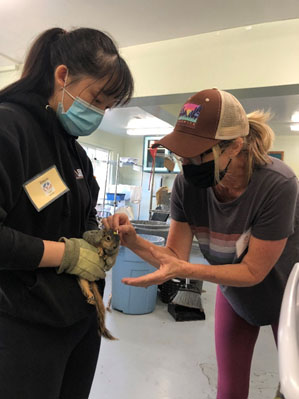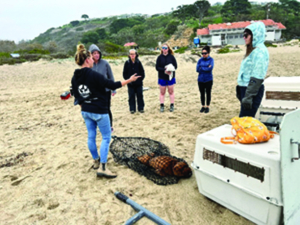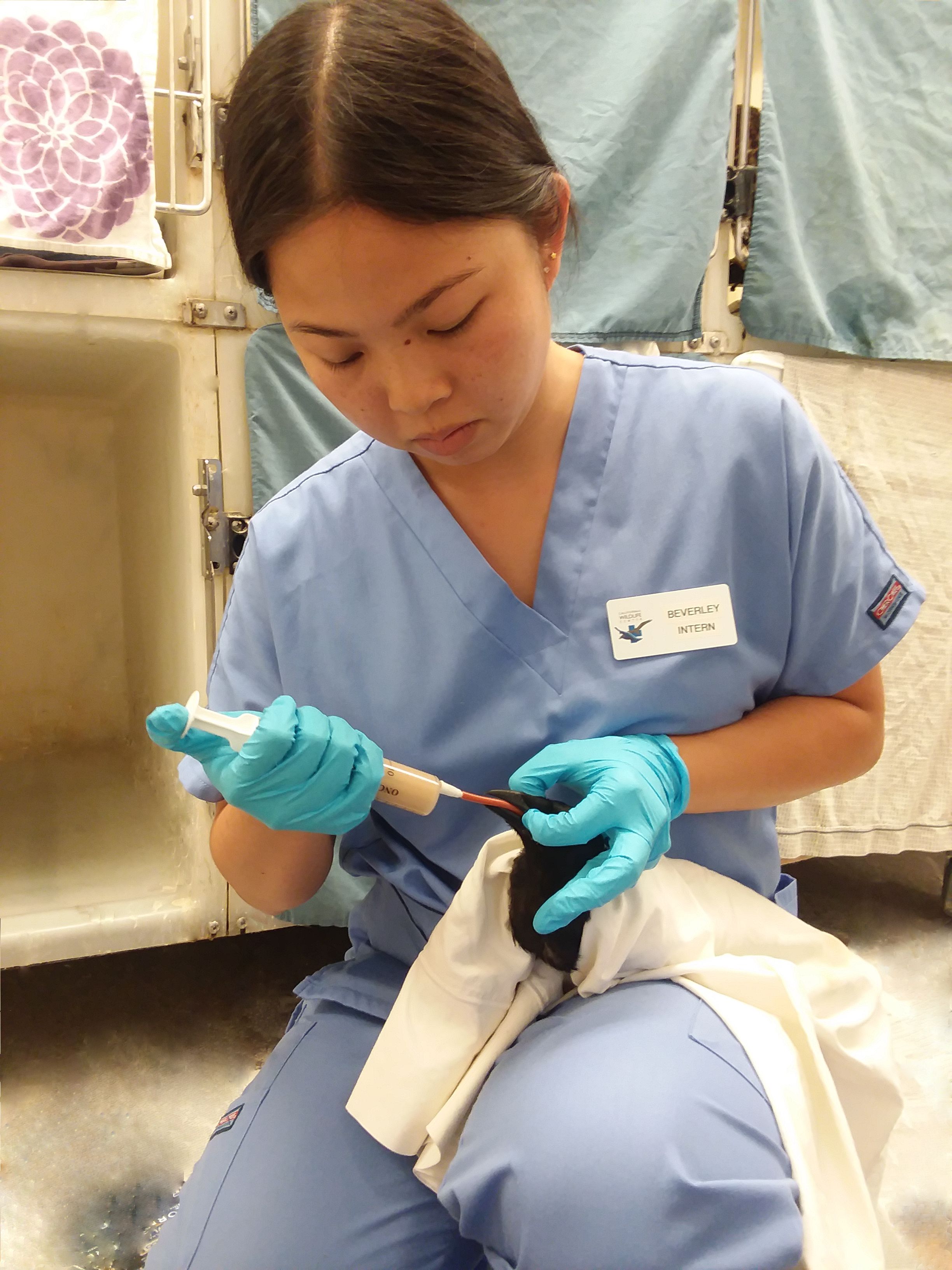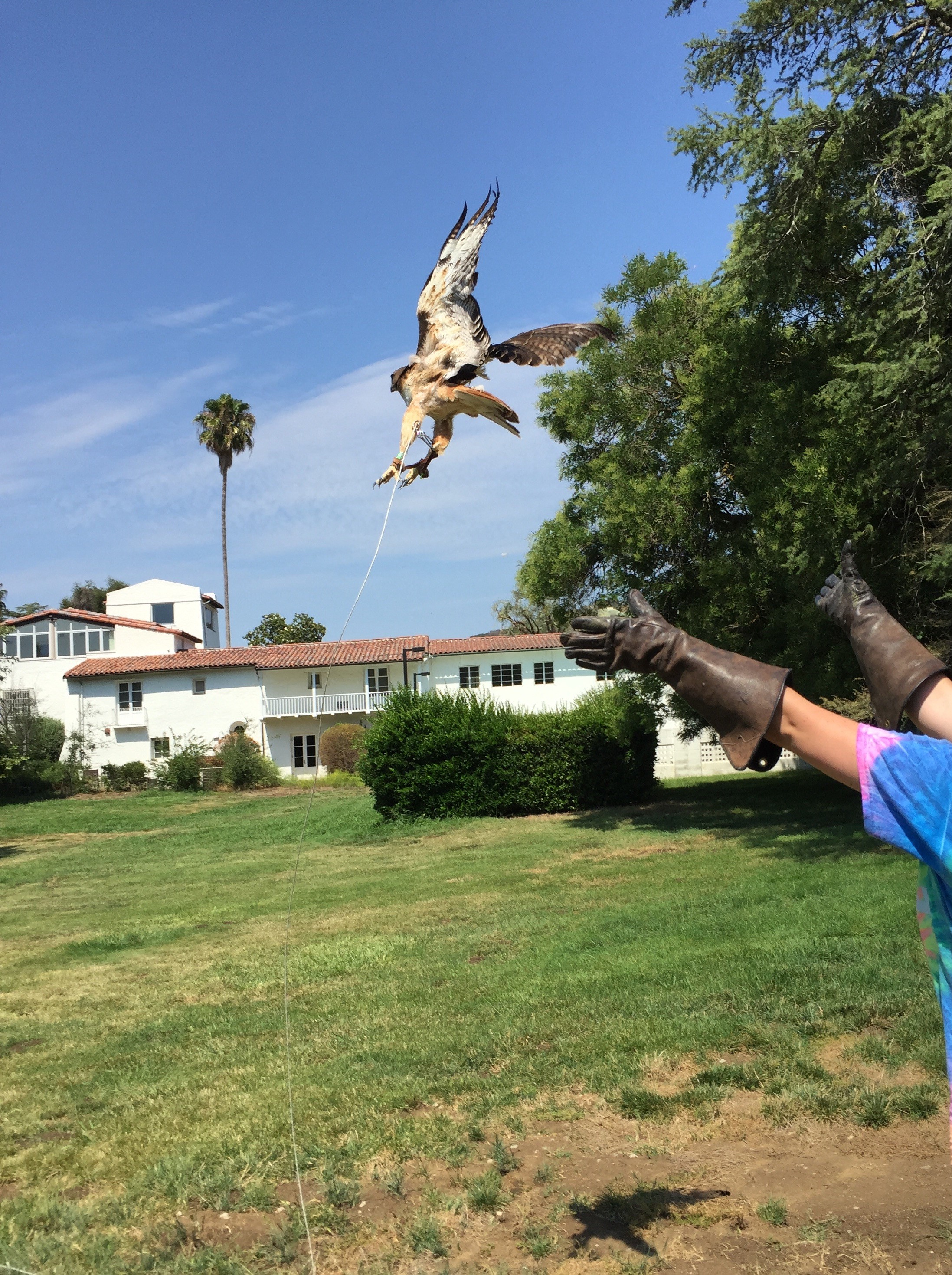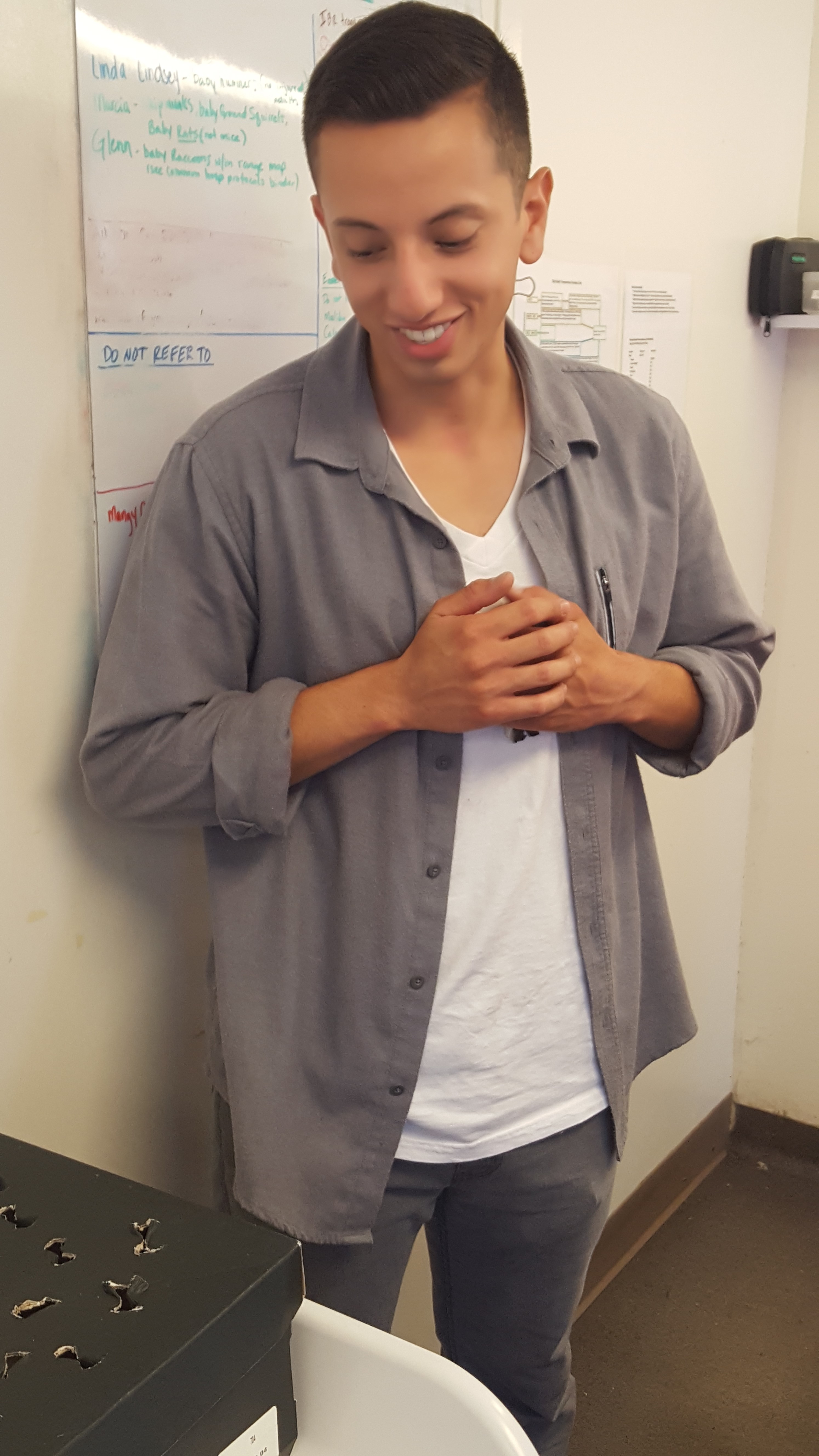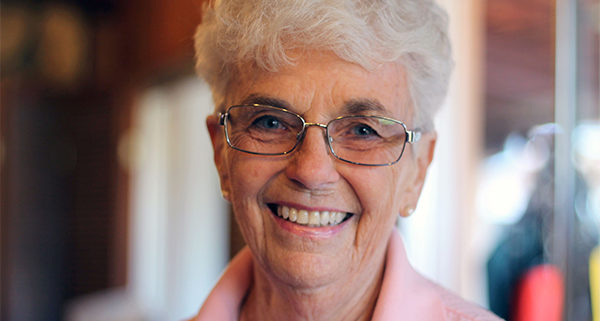Volunteers are Vital!
By Jasmine Regalado, Volunteer Coordinator
With a small staff and 4,300 patients admitted each year, it quickly becomes obvious how important volunteers are to California Wildlife Center (CWC). Volunteers may be the first point of contact for members of the public, rescuers on the beaches of Malibu, line cooks preparing a multitude of diets, or nurses helping to medicate patients. CWC volunteers are a group of passionate and extremely generous folks who make our facility run on all cylinders.
Our volunteers commit to a shift of four hours per week, on the same day and time every week, for a minimum of six months. This allows for consistency with their assigned team and ensures there is always coverage to care for our patients. We are incredibly lucky to have such committed folks—some of whom have been with us for over 10 years! There are a multitude of reasons why our volunteers choose CWC to donate their time to, but every single one of them is passionate about wildlife rehabilitation and conservation.
Each animal that arrives at CWC is received by a volunteer, examined by our hospital staff then cared for by staff and volunteers until they are ready for release. This can take anywhere from just a couple of weeks if the patient is an adult bird with minor injuries, to several months if they are an orphan or juvenile. Regardless of the time any animal spends at CWC, their well-being is of the utmost importance to us. Every patient receives the highest standard of rehabilitative care. Most of the patients require handfeeding and each will spend some time inside, which means that their enclosures must be changed out daily (at a minimum), and once outside volunteers assist with setting up enclosures to represent the outside world and to care for the patients as they prepare for release. For the 150+ species of animal, each needs a different diet based on their species and age—and those diets are meticulously created by our volunteers! Last year, our volunteers donated over 28,000 hours—incredible work by a group of 240 people.
Simply put, we would not be able to operate without the help of the extremely generous volunteers that donate their time, expertise, and passion for wildlife. We recognize and appreciate our volunteers and are incredibly lucky to have them work beside us. human caused, so it’s only fair that there exists some human interference to try and repair some of the damage.
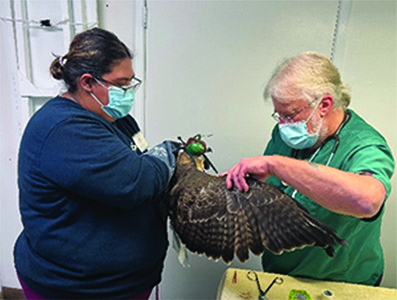
Vet Volunteer Griselda assisting Dr. Purdin with hawk examination
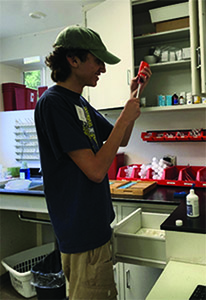
Intern Austin prepares medication for patients
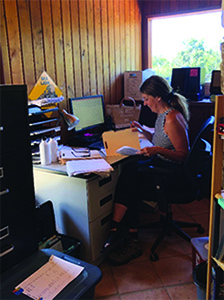
Volunteer Susan assisting with administrative work

Interns Natalie & Harleen preparing hawks for transfer

